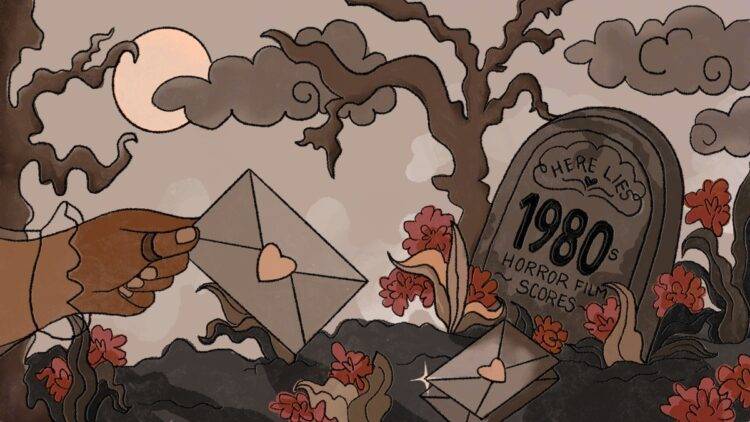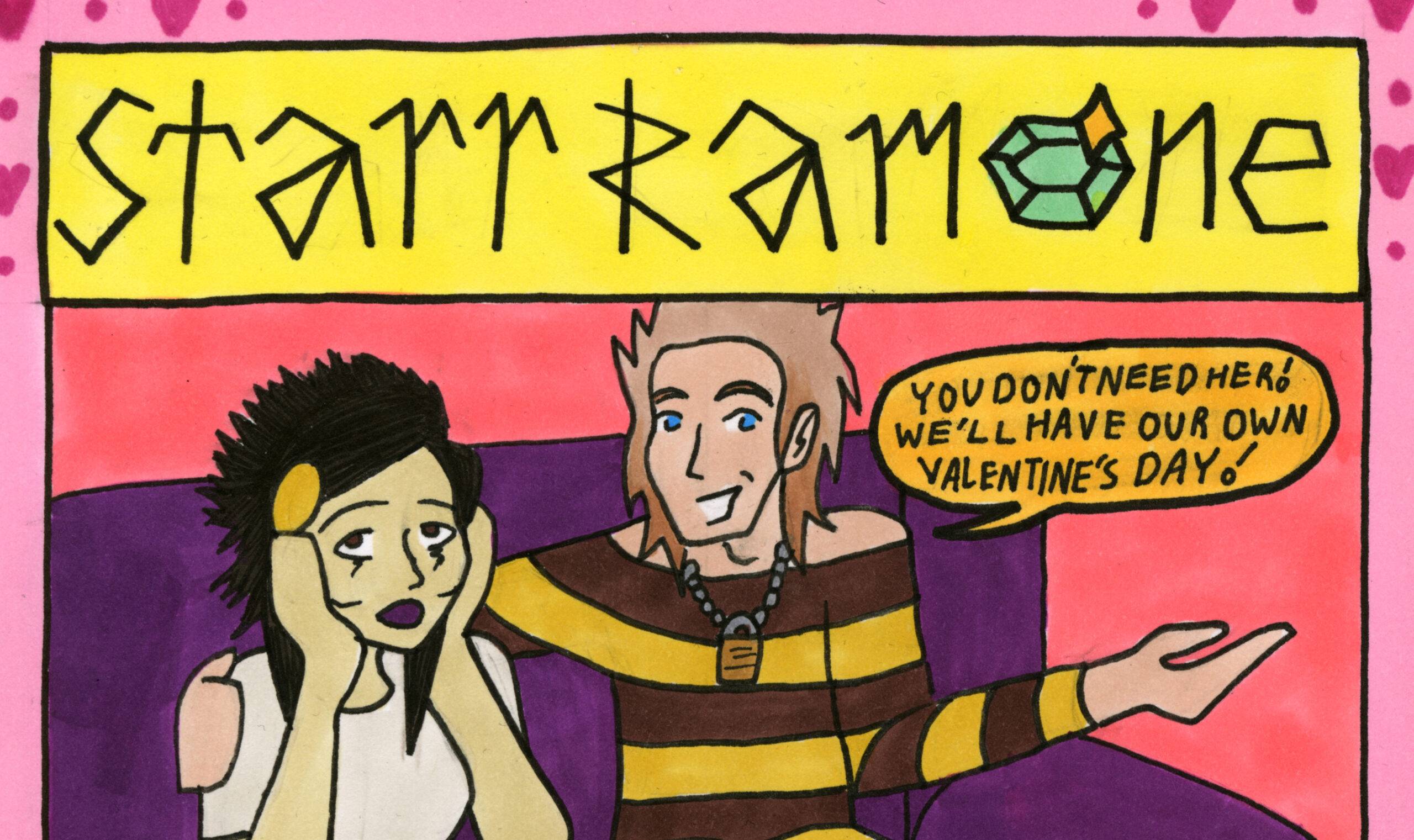
I will never know what it was like to sit nestled in the backseat of a cheap movie theater or smokey car, popcorn in my lap, as Ennio Morricone’s “Antarctic, Winter,” from John Carpenter’s “The Thing” (1982), creeps through the speakers of a movie theater, my heart pounding along to the thum-thum-thum-thump of the sparse synthesizer bass line.
But this type of music, made a good twenty years before I was even a twinkle in my parent’s eyes, is a huge part of my life. From the haunting background chants in Bill Conti’s title track for John Mcteirnan’s “Nomads” to the wailing prog-rock melodies in all of Claudio Simonetti’s scores for Dario Argento, this brief window of time in this even tinier corner of movie music, from about 1982 to 1987, holds a special place in my heart.
To be clear, these aren’t orchestral scores you may think of when a soundtrack comes to mind. Nor are these scores popular music repurposed or made for a film, as these movies tend to be b-movie sleaze with small cult followings. Most of the tracks of this pseudo genre are created with a Moog, a synth pad and a keyboard; sitting in an uncanny zone between ambient music and movie soundtracking.
These types of tracks tend to be deceptively simple; often featuring one repeated beat or single slithering note before surprising a listener, like the best masked killer, with a fully looped melodic mega-storm. They may not be perfect and in fact, can at times be far from it. (Why did Bill Contti agree to have Ted Nuegent sing on a track? Why does the opening of Tangerine Dream’s “Near Dark” score sound so much like a painfully held fart?)
But their retrograde, futuristic sound and painstaking analog production give them a timeless air anyone can enjoy, thanks in part to fantastic remasters of scores, Blu-ray releases of the films, and vinyl rips online. Much of the conversation about these movies and their soundtracks take place among my own small circle of friends, but there’s a legion of dorks online carrying on similar conversations through YouTube channels, podcasts, and forums.
How I stumbled into this cob-web-filled corner of an already small cinephile space is somewhat of a mystery to me, but the music sure sounds good. It probably starts at home. My family are avid consumers of music. At least while I was growing up, they listened to a lot of alt, oldies, singer songwriters, and dorkier pop culture. I’ve always enjoyed electronic music, and the vestiges of the movie-going past still linger for me.
I remember my parent’s VHS and DVD collections, our local blockbuster transitioning to the rental screen for movies on iTunes and Apple TV. I’m not sure what my first bizarre, b-grade horror film was; growing up in Bucks County, PA, we all enjoyed watching M. Night Shamylana’s hits to see what we recognized. On TV, I’d catch snippets of weirdo horror and sci-fi with my step-dad and when at Dad’s house, a slew of prerecorded movies and anime DVDs waited.
Could it have been “The Labyrinth,” with David Bowie’s angelic voice, which turned me on to movie music and dark, practical effects-driven pictures? Or was it later, when I saw “Rubber,” the French film about a tire that blows up people with its mind, and also has a great electronic score by half of the band Justice, that I really dug my claws into b-grade movie music? Maybe it was the bloody, biblical violence waylaid by the fun numbers in our “Veggie Tales” DVD.
I can’t tell what led me to this goldilocks patch of 80s cheese, but I certainly don’t lament the modern age I find myself in. Some of these legacy creators, like disco-legend and soundtrack star Giorgio Mordor, or legendary filmmaker and musician John Carpenter, are still scoring and creating music. This sound of music is literally being called “Carpentercore.” And many, many independent creators have taken up the torch to continue making music in this vein, even if you may only hear it paired with a micro-budget direct to streaming movie or indie side scroller.
We’re in the age of thoughtful horror movies, with breakout directors like Jordan Peele redefining the genre and micro-budget crowd-sourced projects like “Terrifier 2” making over a million dollars in theaters. I grew up in the 2000s, which, if anyone cares to remember, was pretty hit or miss for horror movies. Only a few shining stars remain from that dark age of jump-scare-a-minute slop; stuff like the genre-defining “Saw,” Canadian sleeper hit “Ginger Snaps,” and mega popular horror-comedy “Scream” with all its various send-ups and sequels.
Now, in the 2020s, we not only have easy access to groundbreaking horror from America and abroad, but also Blu-ray releases, full restorations, and midnight movie screenings for cult classics and hidden gems alike. The one thing that is missing is movie scores. Think of my above list of more recent horror classics. Do any of them have a theme as well known as the music to “Halloween?” (Yes, I know that movie came out in 1978, before you “um actually,” me).
And nevermind horror movies; can you recall a single movie score from any movie from the past ten years? Can you hum one, or even faintly recognize one, even if you aren’t sure which movie it’s for? It may be that talented composers have moved on to bigger and brighter frontiers in the video game space, which is host to its own buffet of fantastic soundtracks across many genres. Movies today most certainly aren’t made, released, or produced how they were forty years ago, nor do people watch, experience, or think about them in the same way, just by virtue of time passing.
Modern movies are hares, they make big bucks opening night, then quietly go to digital after a few weeks. Studios turn them around quickly and produce far more. Thirty to forty years ago, movies were tortoises; far fewer movies came out, and they didn’t make nearly as much upfront. They played for months on end to generate large grosses. Hollywood only had to compete with itself; no internet, streaming, or video games could distract audiences, and it wasn’t until the advent of VHS players that viewers got movies in their homes at all.
Part of the reason horror movies are popular for audiences and studios alike is because they’re so profitable. As in, a passionate group of people can crowdfund a movie like “Terrifier 2” for a paltry $250,000 dollars and get over one million dollars in box office returns. You can crank out twenty years of “Friday the Thirteenth” sequels and “Saw” reboots until you stop making a profit. Yet despite horror being a lower risk environment, a memorable electronic score has yet to grace any of these recent horror hits.
A long lasting “brand recognition,” relying heavily on previously known IP and generating big buzz for opening night, may do far more to spread the awareness of a modern movie than any title track. And niche nerds like me aren’t a big enough market to sell to or create music for. People don’t often buy movie soundtracks, save for a few exceptions of pop songs made for movies, nevermind buying physical movie soundtracks. Even with the return of vinyl and retro media, creating a unique and marketable movie score may be a big and risky task, things Hollywood is not fond of.
Then again, whether anyone cared about these few years of movie music, how they were felt by the public, and if they were at all, is beyond my knowledge. Did any of my parents have the soundtrack to “The Hitcher” on vinyl? Unless you were an electronic music nerd, I strongly doubt it. This trend of sparse electronic scores may’ve been dead by the end of the 80s, and it is not for lack of talented individuals or passionate but small circle of fans.
In an age where we don’t suffer for much content wise, the skills of a good composer or director-turned musician are sorely missed by me, someone who never grew up with this as a prominent feature in horror movies to begin with. With the ease of making music today, something the low-budget to mid-budget horror icons of the past used to their advantage, I can and do believe that we may enter another horror movie-music renaissance. Until then, I slake my fiendish thirst with the oldies and send-ups.







